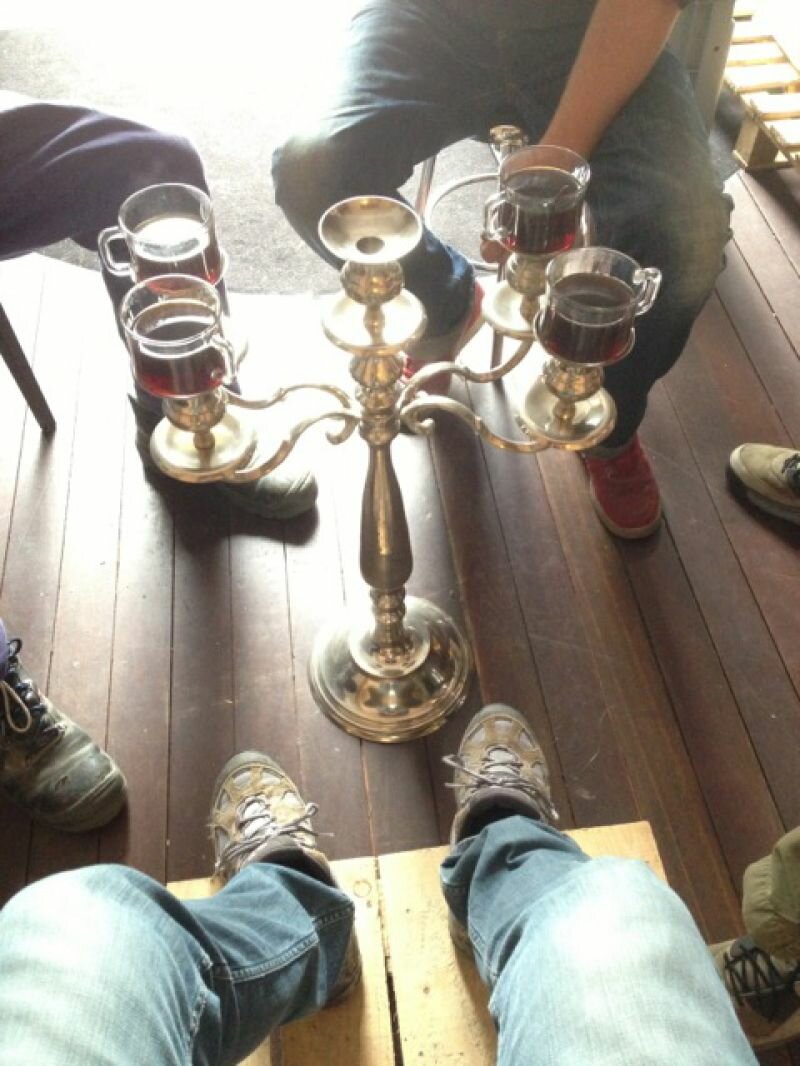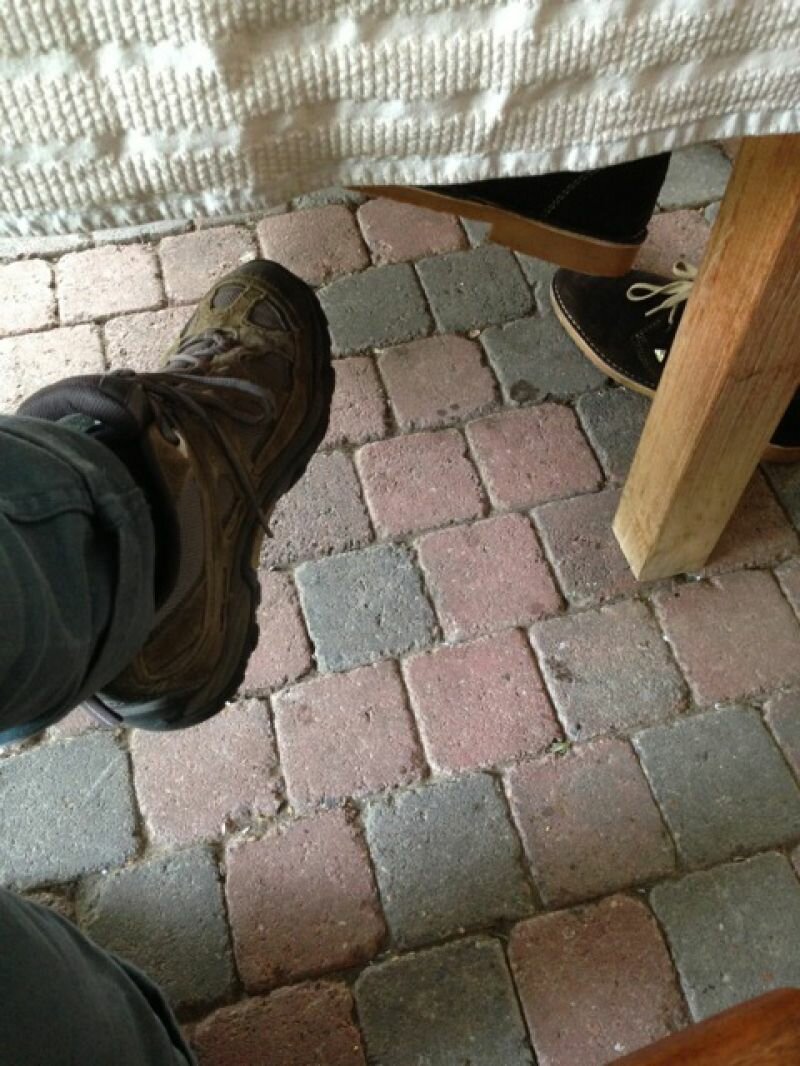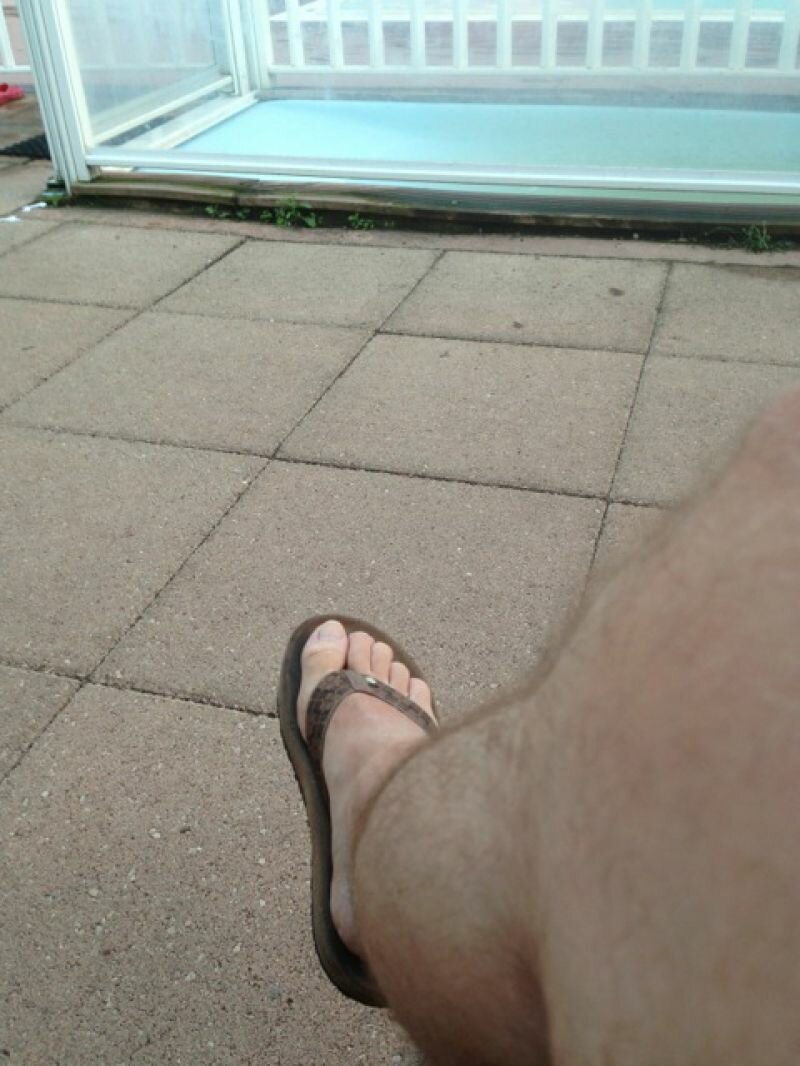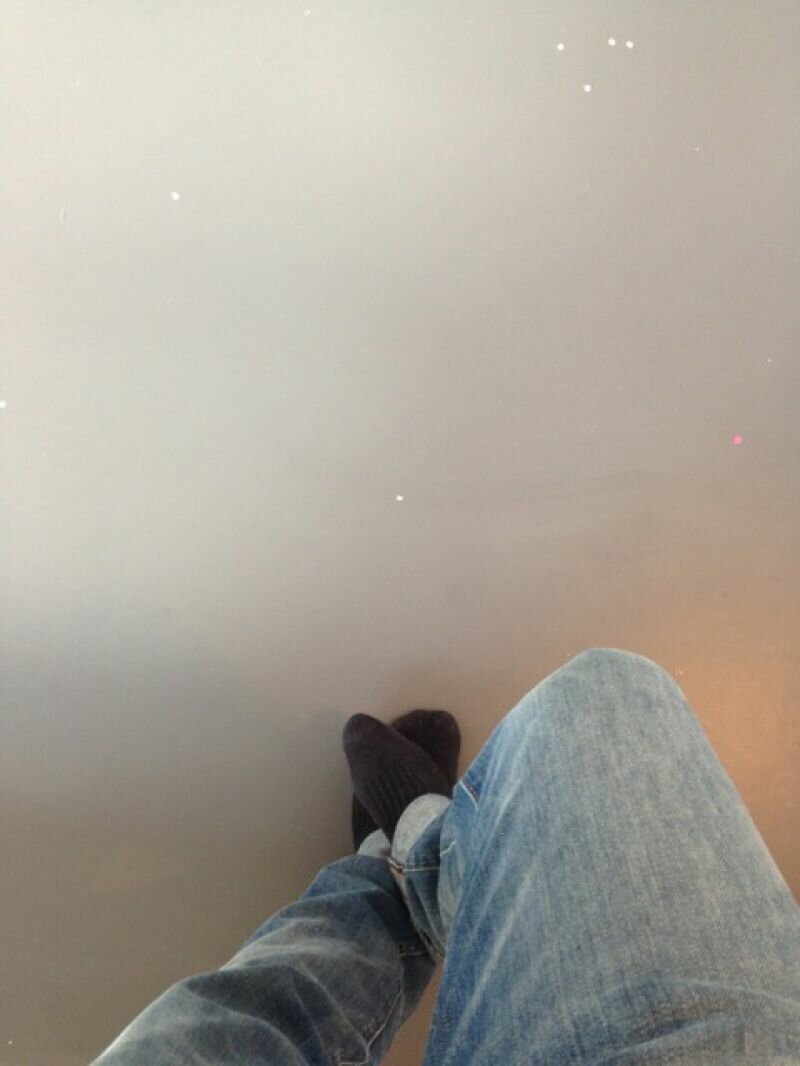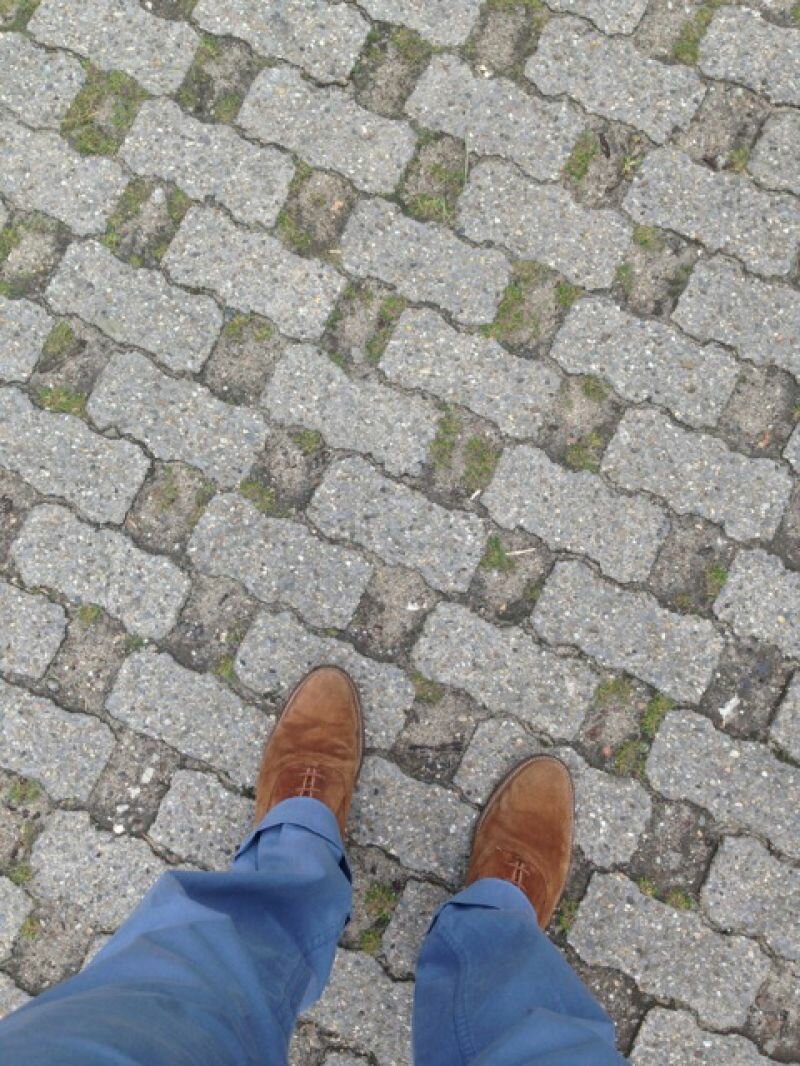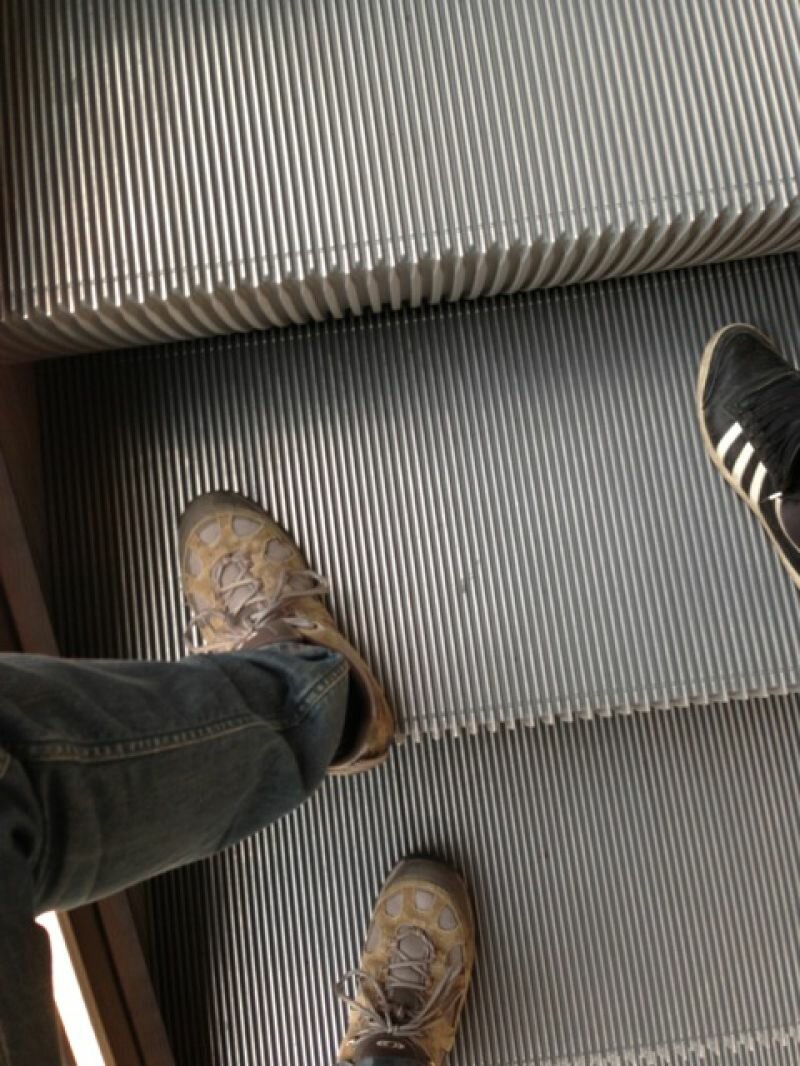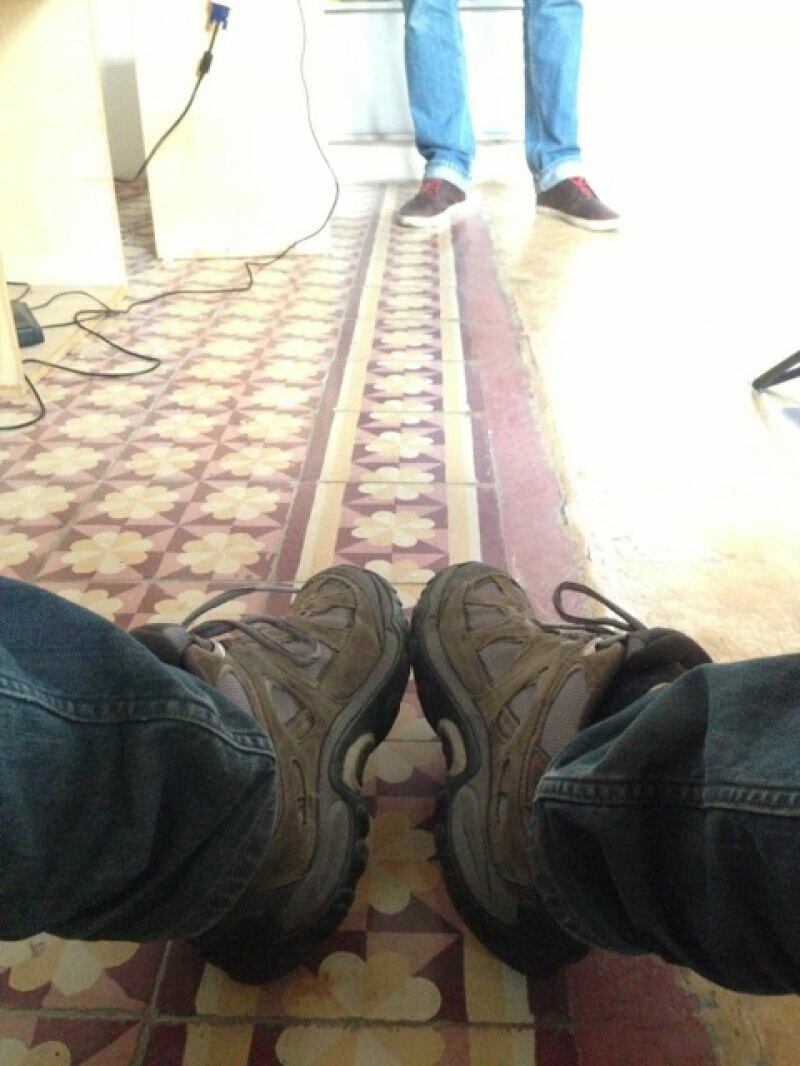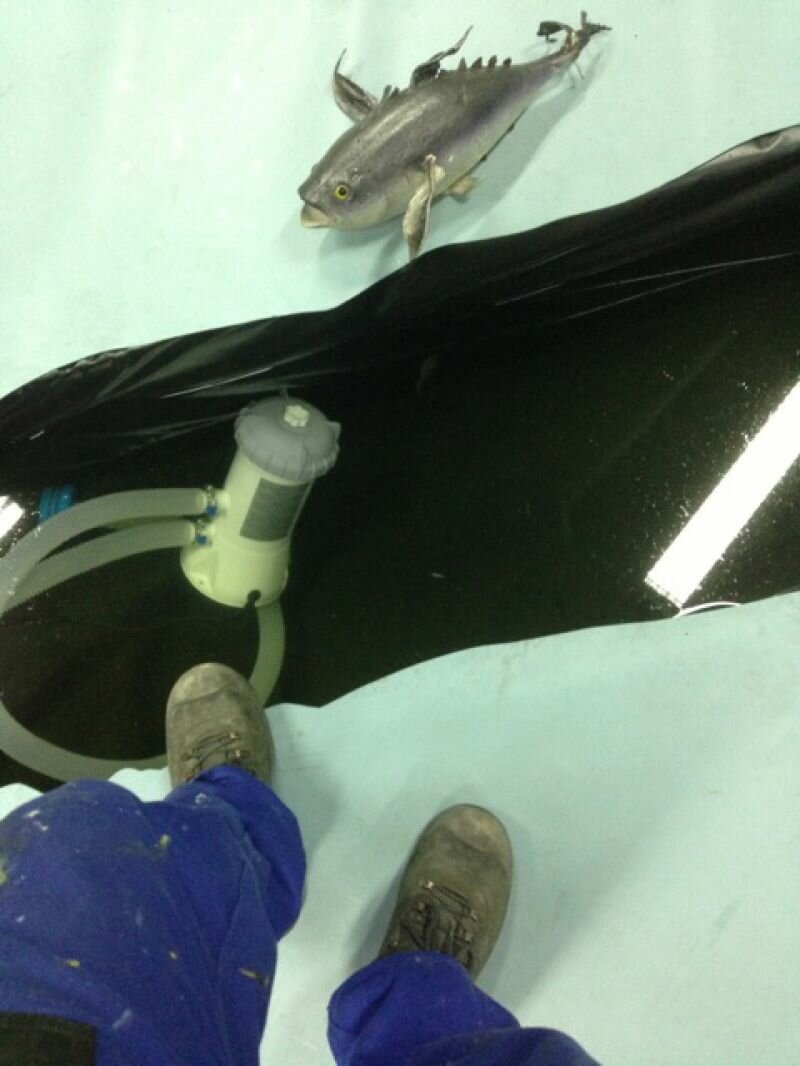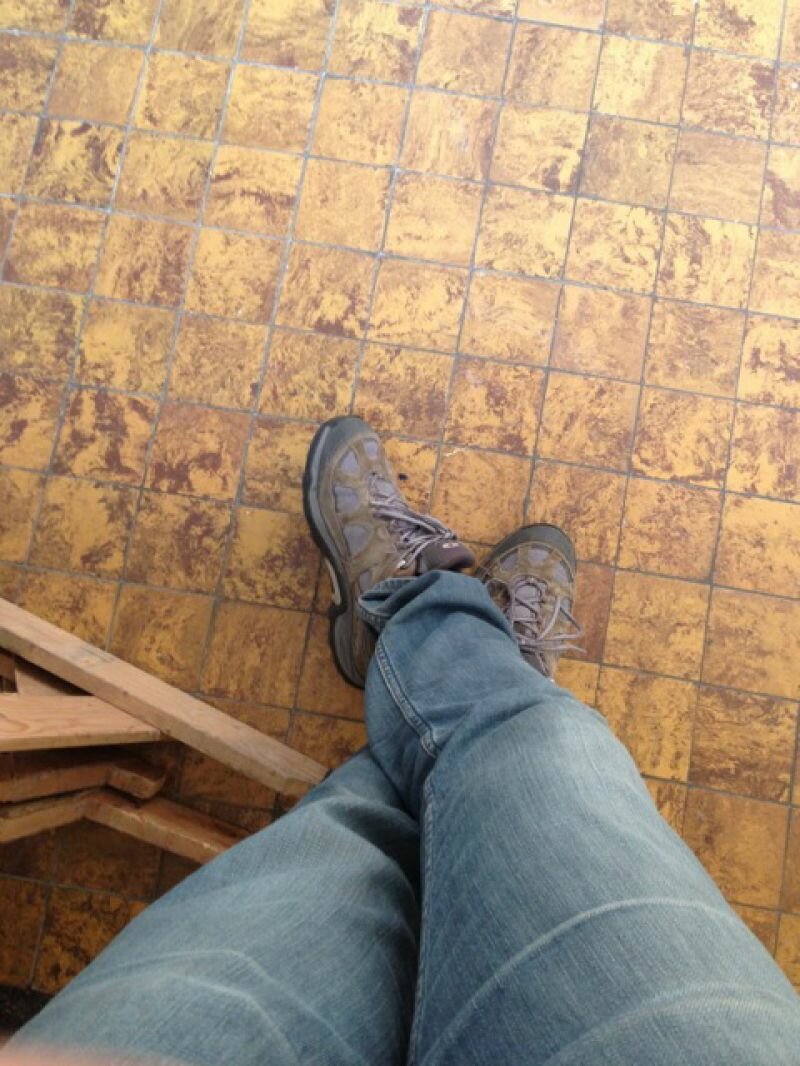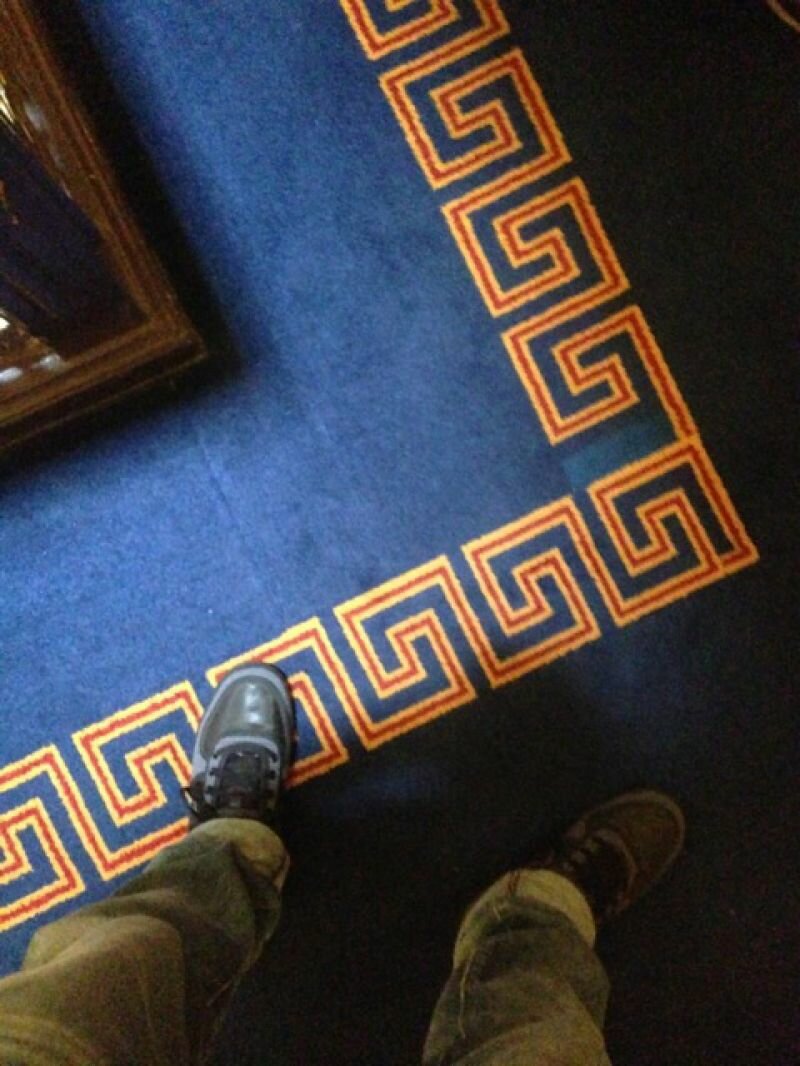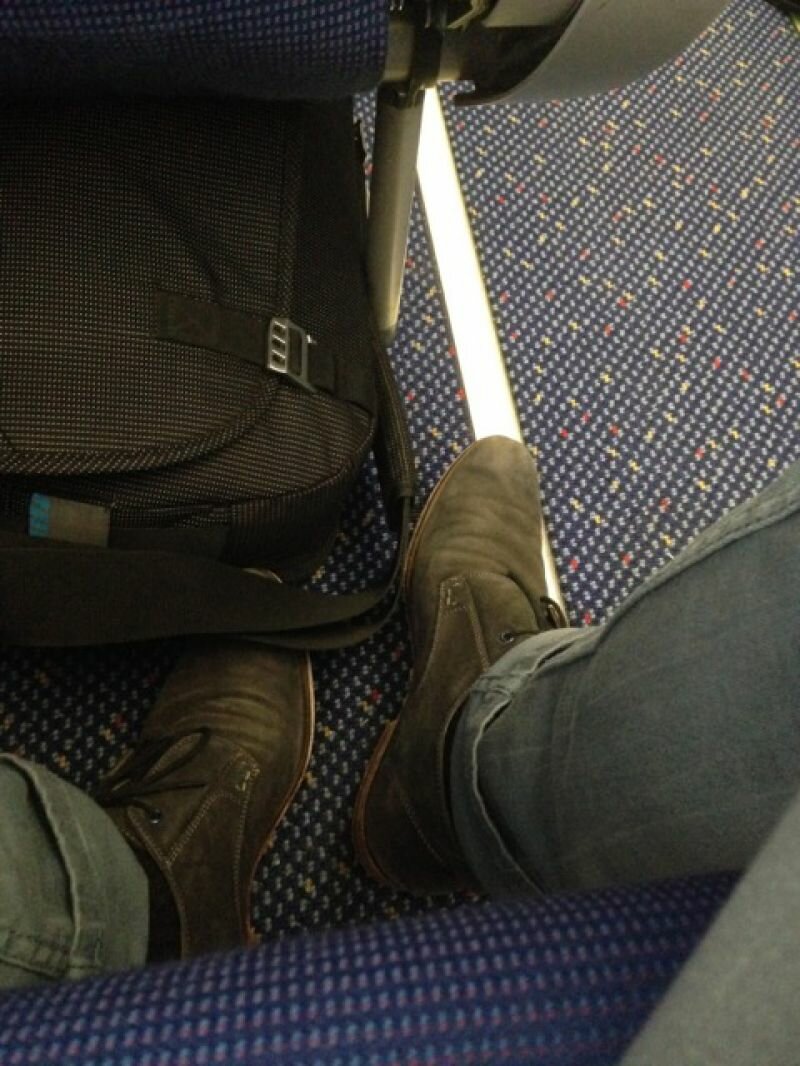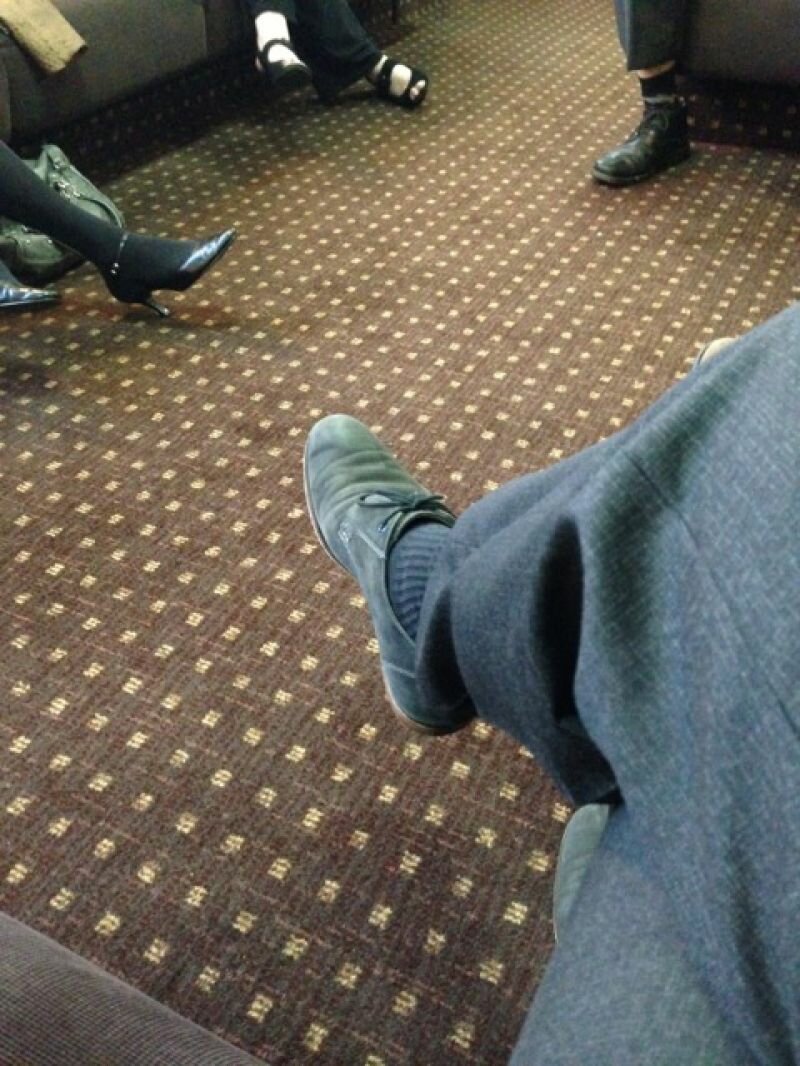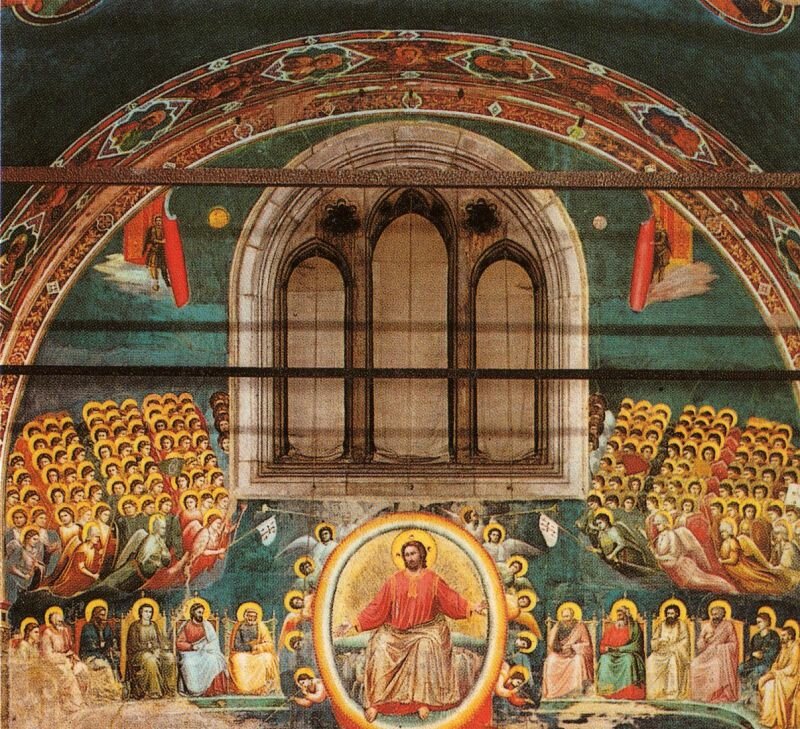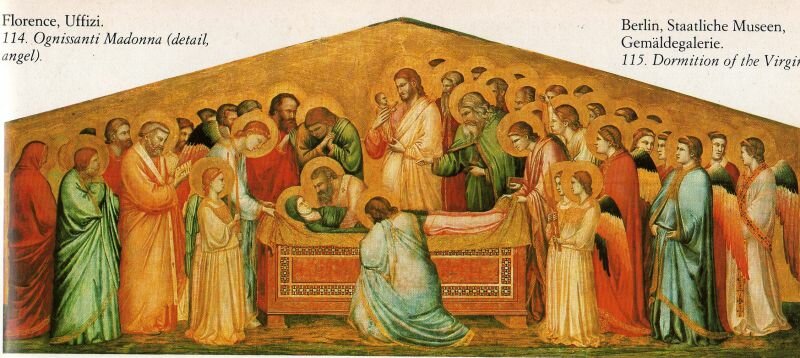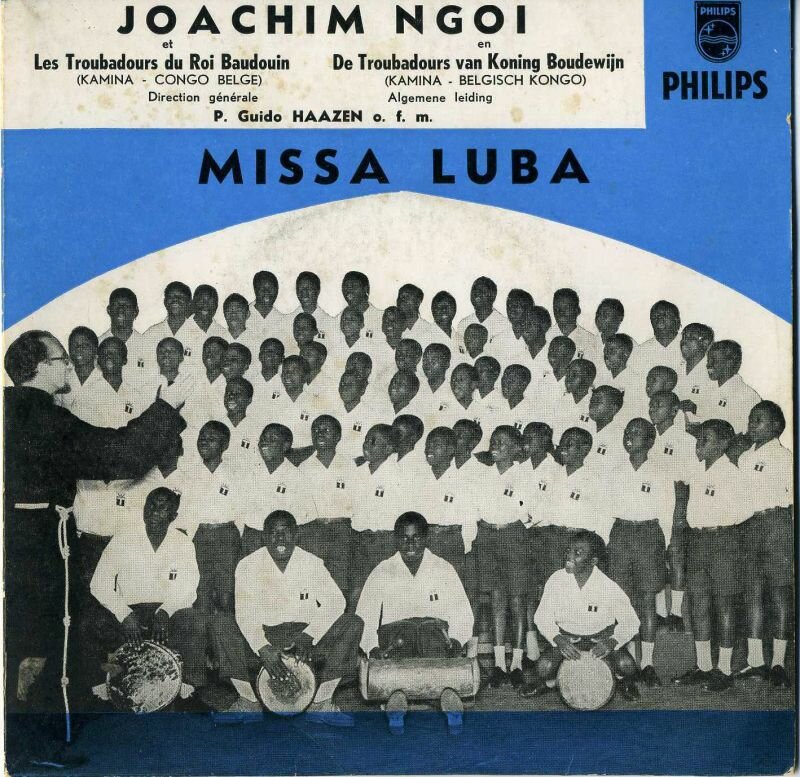Giotto’s painting is praised for many different reasons. For its simplicity and realism, its clear narratives and compositions, its imaginative landscapes and architectures, its drama and use of colour. One of the Giotto’s most interesting innovations was his use of the isocephaly, or “levelled heads”: grouping figures on a horizontal plane, on level ground.
Giotto makes ingenious use of the isocephaly in his masterpiece, the murals at the Arena chapel of Padua.
In his monumental rendition of the Last Judgement, Giotto expands dimensions both horizontally and vertically. It’s plausible since the scene doesn’t take place on earth but in the kingdom of heaven. Moreover, he needed to find a solution for arranging the halos around the choirs of saints and angels.
The Assumption of Mary in Berlin shows an interesting take on the isocephaly. The play between head and halo of partial overlap and complete visibility are taken to extremes.
Once fascinated by Giotto’s isocephaly, more and more details will start standing out. Like how within a large group, the exception sets the rule, by the individual figure looking backwards at someone standing behind him. Or the variation in how the crowns of heads arise above the halos in front of them. Or how subtle variations break the monotony of the group.
Giotto’s isocephaly is addictive. Gitto or Cimabue, painting or photography, football team or choir, you can’t stop looking. Once you’ve acquired an eye for it, the arrangement of the figures goes from being secondary to the most important aspect of his work.
